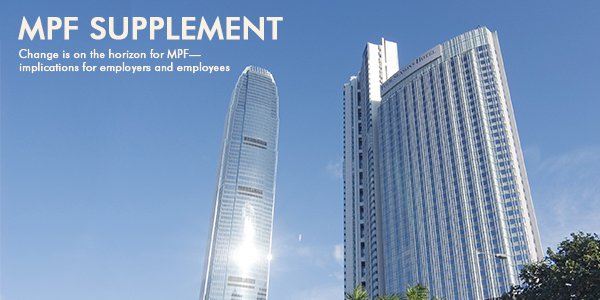
MPF evolution: Development of HK's Mandatory Pension Fund—where it's at & where it's going
In traditional Chinese society, retirement was expected to be financed by a combination of personal savings and support of the extended family. In an era where extended family was the norm and life expectancy low, this system—while lacking in a number of regards—was functional. But by the late 1990s, life expectancy had soared in Hong Kong, and the extended family had largely devolved to a nuclear family due to lower birth rates. This ageing population provided a demographic challenge of unprecedented proportion, and after 30 years of debate, MPF was launched in 2000 to guarantee the golden years remained golden.
Employee Choice Arrangement
Initially, employers had full say over which MPF provider they used, with employees having no say in the matter. This was adjusted in 2012, when the Employee Choice Arrangement (ECA) was introduced. The ECA has given employees the right to transfer their MPF accrued benefits, i.e. the accumulated contributions and investment returns, derived from the employees’ mandatory MPF contributions in their MPF contribution account, into an MPF trustee and scheme of their choice. Such transfers can be made once every calendar year, between 1 January and 31 December, and the benefits must be transferred to their chosen scheme on a lump-sum basis.
ECA effectiveness
The ECA has given much greater autonomy of choice to employees, allowing them to choose their own MPF trustee and scheme and has encouraged them to better manage their MPF investments—further enhancing market competition, but how successful has it actually been? Throughout the MPF’s history, and especially when promoting the ECA, the MPFA has always advised scheme members to think carefully before exercising their ECA rights. With this in mind, an assessment of the overall effectiveness of ECA cannot simply focus on the number of applications received. Instead, it is better to look in instances of ECA whether MPF benefits were transferred smoothly and efficiently, and whether the public are aware of ECA arrangements. According the MPFA, from the launch of ECA to 31 March 2016, MPF trustees received about 302,500 ECA transfer applications, all of which were effected smoothly and in a timely fashion. The whole benefits transfer process currently takes about two to three weeks—significantly shorter than the originally anticipated six to eight weeks. In terms of public awareness, according to surveys conducted by both the MPFA and the MPF industry, both employers and employees have been shown to be well aware of ECA.
MPF—where it's going
Since inception, the MPFA has been exploring ways to further refine and enhance the MPF system—two major new initiatives are in the pipeline. The first and foremost is the introduction of the Default Investment Strategy (DIS). Secondly, is concept of an ‘eMPF’ to facilitate full portability of funds.
DIS
While some scheme members want more investment choices, there are also those who do not know how best to, or do not have time to, select MPF funds. To help these members, an amendment bill was introduced into the Legislative Council last year, which they are currently considering, to mandate a standardised DIS across all MPF schemes.
The DIS is designed to provide all scheme members with a simplified investment option—consistent with the overall objectives of retirement savings. The DIS is a globally diversified investment strategy that will de-risk as the age of a scheme member increases. In addition, funds invested in the DIS will be subject to a fee cap. The MPFA believes that the DIS will be appropriate for scheme members who find it challenging, either due to time constraints or lack of knowledge, to make investment choices.
eMPF
According to the Consultancy Study on MPF Trustees’ Administration Costs released in 2012, commissioned by the MPFA, around 65% of the 30 million administration transactions processed in the system are paper based or executed via cheques. This amount of paperwork necessitates a high degree of manual intervention to process applications and transfers—bringing significant administration costs to organisations, in particular to the HR department.
To help alleviate this administrative burden, in parallel with the DIS, the MPFA has also embarked on another major initiative tentatively called ‘eMPF’. In this regard, the MPFA has already developed a preliminary conceptual model of the eMPF infrastructure and processes to standardise, streamline and automate MPF scheme administration in the long run.
The eMPF model would bring several key advantages. Firstly, if MPF scheme administration could become completely paperless, this would eliminate the need for manual input—thereby reducing human input errors and overall operating costs. Secondly, a paperless system also has a positive impact on the environment—with so many paper documents currently being handled by MPF providers every day. Thirdly, the system would also be great news for HR with reduced paperwork and more streamlined operations bringing the scheme in line with the trend towards digitisation in the majority of today’s HR processes.
Extended reading
- Is MPF purely an employee benefit? AIA MPF has a different view
- BCT on MPF
- Manulife on MPF
- Principal Investment & Retirement Services Ltd. on MPF




